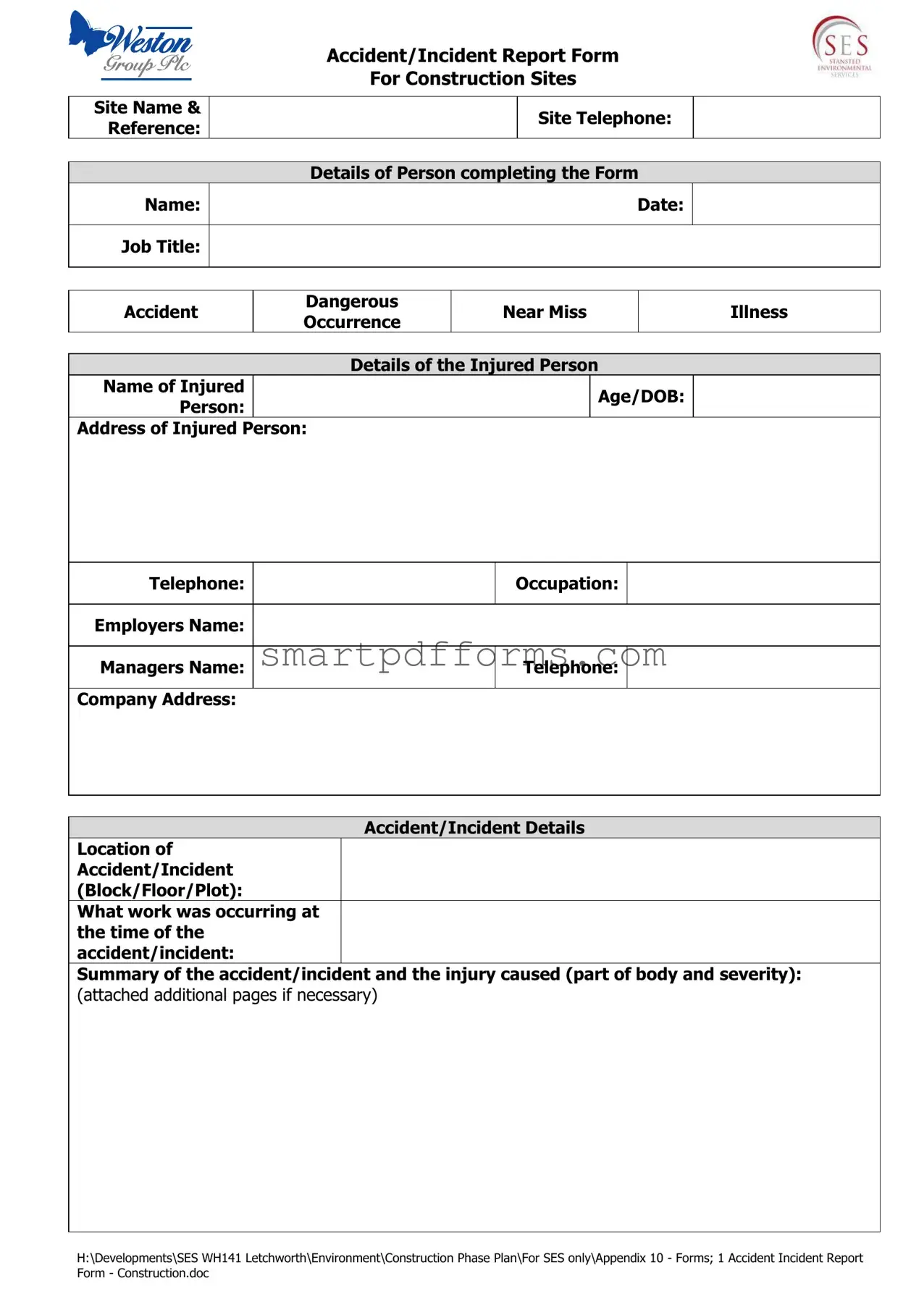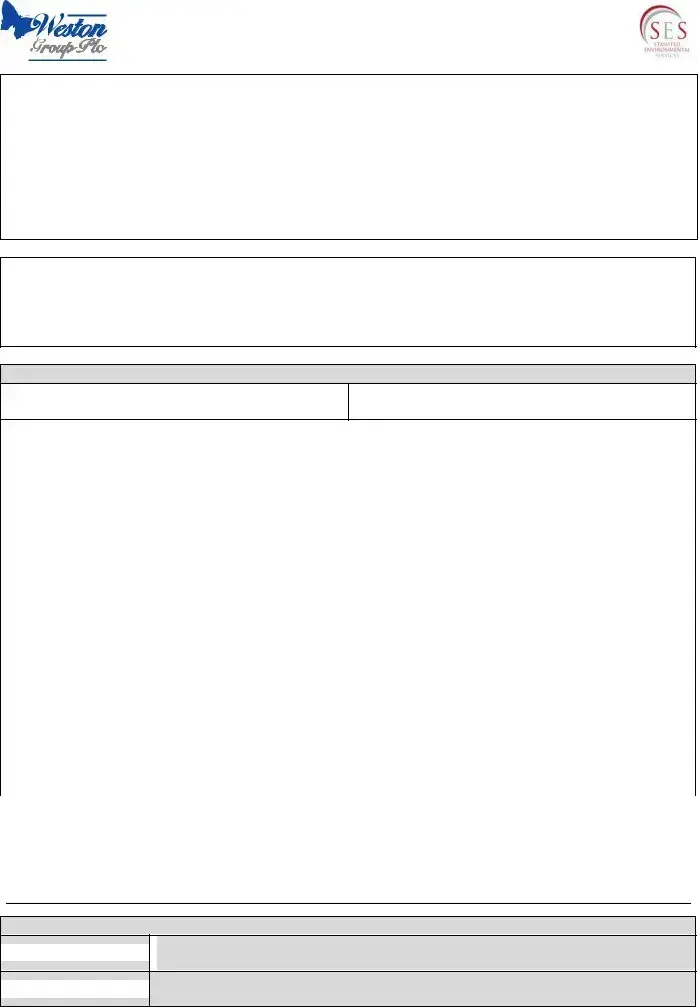Understanding the intricacies of a Construction Accident Report form is crucial for everyone involved in the construction industry, from project managers to workers on the ground. This form serves as a critical tool to document any accidents, near misses, illnesses, or dangerous occurrences on construction sites. It starts by collecting basic but essential information about the site, including its name, reference, and contact number, followed by data about the person filling out the form, such as their name, job title, and the date. The essence of the report lies in detailing the incident, which encompasses identifying whether it was an accident, a dangerous occurrence, a near miss, or an illness. Moreover, it requires comprehensive information about the injured person, including their name, age or date of birth, address, telephone number, occupation, employer's name, and manager's details, which helps in understanding the incident's context and potential implications on the workforce. The form dives deeper by asking for specific details about the location of the accident or incident, the nature of work being done at the time, and a detailed account of what happened, including which part of the body was affected and the severity of the injury. Crucially, it prompts the recorder to attach additional pages if necessary, ensuring that no aspect of the incident is left undocumented. Furthermore, it inquires about witnesses, immediate actions taken, such as the provision of first aid, and follow-up actions to prevent a recurrence, including whether a Method Statement was in place or if the injured person was properly inducted and holding a current CSCS card. Each of these components plays a vital role in not just recording the incident for legal and insurance purposes but also in paving the way for enhanced safety measures on construction sites.



 Accident Category
Accident Category 
 Follow-up
Follow-up